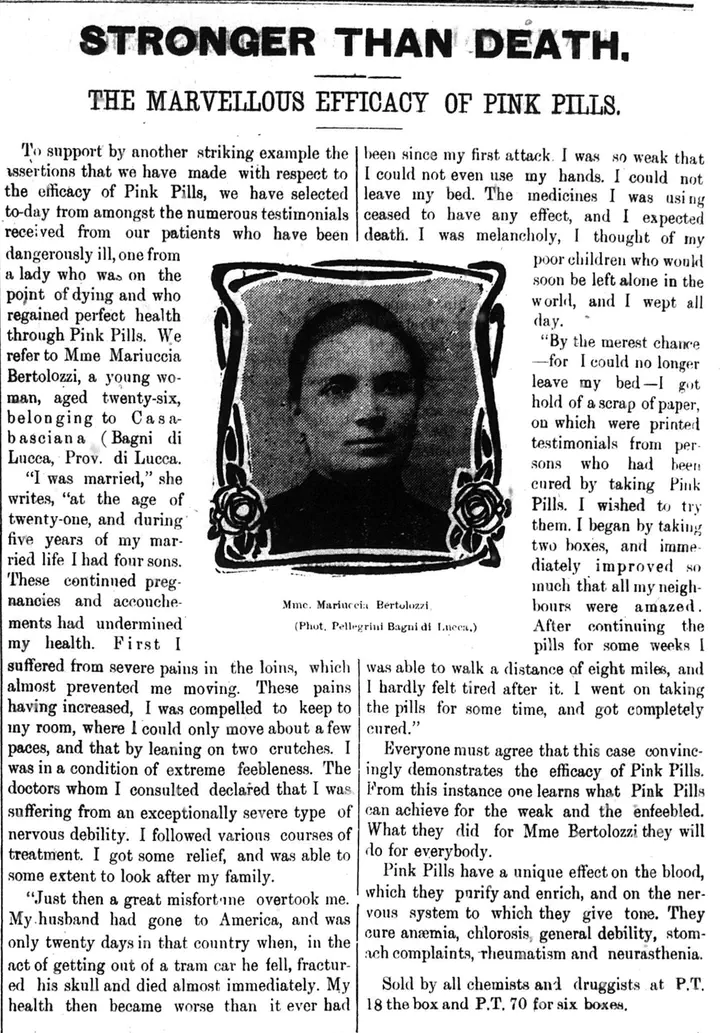Pink Pills: Stronger Than Death
 1907-07-17, page 4
1907-07-17, page 4Pills and medicines have relentlessly shown themselves throughout the Egyptian Gazette as miraculous solutions to peoples’ problems. This piece called “STRONGER THAN DEATH” begins with stating its purpose: to add more evidence that Pink Pills work. The story of a woman’s tragedy plays out in which she develops accumulating sickness after having many children in a short span of time. The sickness only worsens as she finds out her husband had died falling, trying to get out of a tram car in America. The story goes on with how she healed to the point of full health after discovering the existence of the pills.
To me, this article seems to be more about promoting an idea than a real cure. What offsets its validity as a medicine is the idea that it could cure numerous types of sicknesses. “They cure anaemia, chlorosis, general debility, stom-ach complaints, rheumatism and neurasthenia.” Targeting the population, it uses several tactics. The article appeals to the entire audience, saying “Everyone must agree” and “they will do for everybody” and more. The article uses a relatable and pained main character that the people would feel sorry for, appealing to human emotions when the descriptions of her life and tragedies such as her husband dying.
“From this instance one learns what Pink Pills can achieve for the weak and enfeebled.” This statement paints the pill as a wondrous cure that saves people from weakness.
What I found was that these stories of the use of phenomenal Pink Pills may be continuous and confirm their worth. In this blog post, it is revealed that the pill has before already been called “Pink Pills are said to cure Anaemia, Indigestion, Eczema, Rheumatism, Sciatica, St. Vitus’ Dance, Neuralgia, Nervous Disorders, Paralysis, and Locomotor Ataxy.” This article “STRONGER THAN DEATH” links back to that with the mention of some of those same sicknesses. The author gives more depth to the pill’s contents and how the pills are a scam.